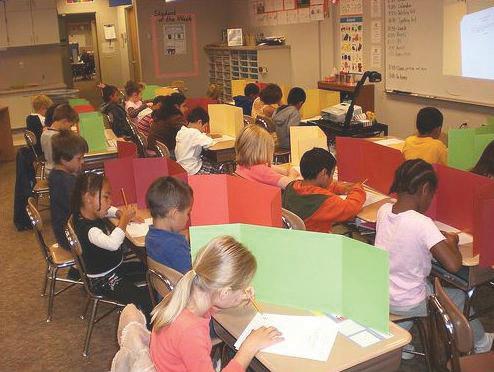When it comes to educating the nation’s children, the talk always comes back, boomeranglike, to the almighty dollar — funding from the state, from the federal government, funding per student and household, funding for teachers and administrators.
The volatile combination that makes up the education debate — that is, students and how best to budget their scholastic upbringing — sparks some of the most heated name calling and bluster in the public forum.
Snips over the District’s public school budget have kept the newspapers working hard lately (as evinced the city council’s recent spat with DCPS Chancellor Michelle Rhee) but what you won’t hear about is the daily challenge for some schools to foot their own bill, that is, without help from taxpayers.
Enter the world of private education.
While the phrase conjures images of blazers and bookish upper-crusters, many private and parochial schools — which nationally are responsible for educating around 10 percent of students — operate on a lean budget, and aside from non-profit tax breaks and D.C.’s now-frozen voucher program, receive no public funding from the government. The business of keeping cash flowing freely, then, is a big one, and most of the nation’s private institutions have whole departments devoted to it.
Their job is to think of ways to drum up the dollars when tuition revenue won’t quite pay all the bills. And while most private schools are happy to accept donations from the general public, advancement departments usually have a few target markets in mind, with alumni and parents naturally serving as primary benefactors.
Most schools set a fundraising benchmark in the form of an annual fund, which aims to reach a certain dollar amount by the end of the school’s fiscal year. Annual funds are easy to donate to, are trackable — many schools keep a running tally on their websites — and can be tailored to commemorate a significant individual or date, say, the school’s centennial. They’re lucrative, too: Gonzaga College High School and St. Albans School report around 10 percent of their operating budget comes from annual fund revenue. In only 15 years, Woodley Park’s Maret School has increased its annual fund earnings from $250,000 to $1.6 million. Figures at other schools are smaller, but across the board annual fund revenue is cited as a gap-bridger when tuition, as it often does, only covers 80 to 85 percent of operating costs.
But advancement departments don’t just serve as liaisons for deep-pocketed alums. Most are composed of talented fundraisers with a knack for making donations worth the benefactor’s while. That means events — auctions, galas, golf showdowns and the like — which form a nicely symbiotic arrangement to earn money while fostering a lively social scene within the school community. Think of Washington’s storied gala scene on a smaller scale — and with higher-caliber small talk.
St. Albans, for example, is home to an active parents association that conducts the annual Christmas House Tour of five stately homes in Cleveland Park. The houses are typically owned by alumni or relatives of students, and through ticket and sponsorship proceeds, the tour has raised an average of $350,000 annually since 2004.
The yearly effort is contributed to the school’s Centennial Campaign, which is aiming for a hefty $80 million goal by the end of the year.
Sidwell Friends, the prestigious Quaker school with the Obama family bragging rights, recently passed — a year ahead of schedule — the $56 million benchmark for its Call Us Friends campaign, begun in 2002. The project was a grassroots effort by the school and over 150 volunteers (parents and students alike) to fund a new athletic center and fill out financial aid coffers for needy students.
The school’s annual auction and book club also directly benefit the Dollars for Scholars program, which has proved so successful that Sidwell Friends averages a guarantee of two-thirds tuition for its aid recipients — generous, given the school’s $30,000 price tag.
Many schools also maintain a long-term planned giving program, in which a lump sum is contractually placed in trust and supplies annual payment to an agreed-upon party. Georgetown Visitation’s Charitable Gift Annuity arranges for annuities to be paid to the donor for the duration of their life; afterward the original gift is bequeathed to the school. Opposite that is a Charitable Lead Trust, in which the school receives annuities for a slated amount of time before the gift is returned to the donor. Gonzaga, National Cathedral School and Maret School all conduct similar programs.
Talk about a step up from the bake sale.


